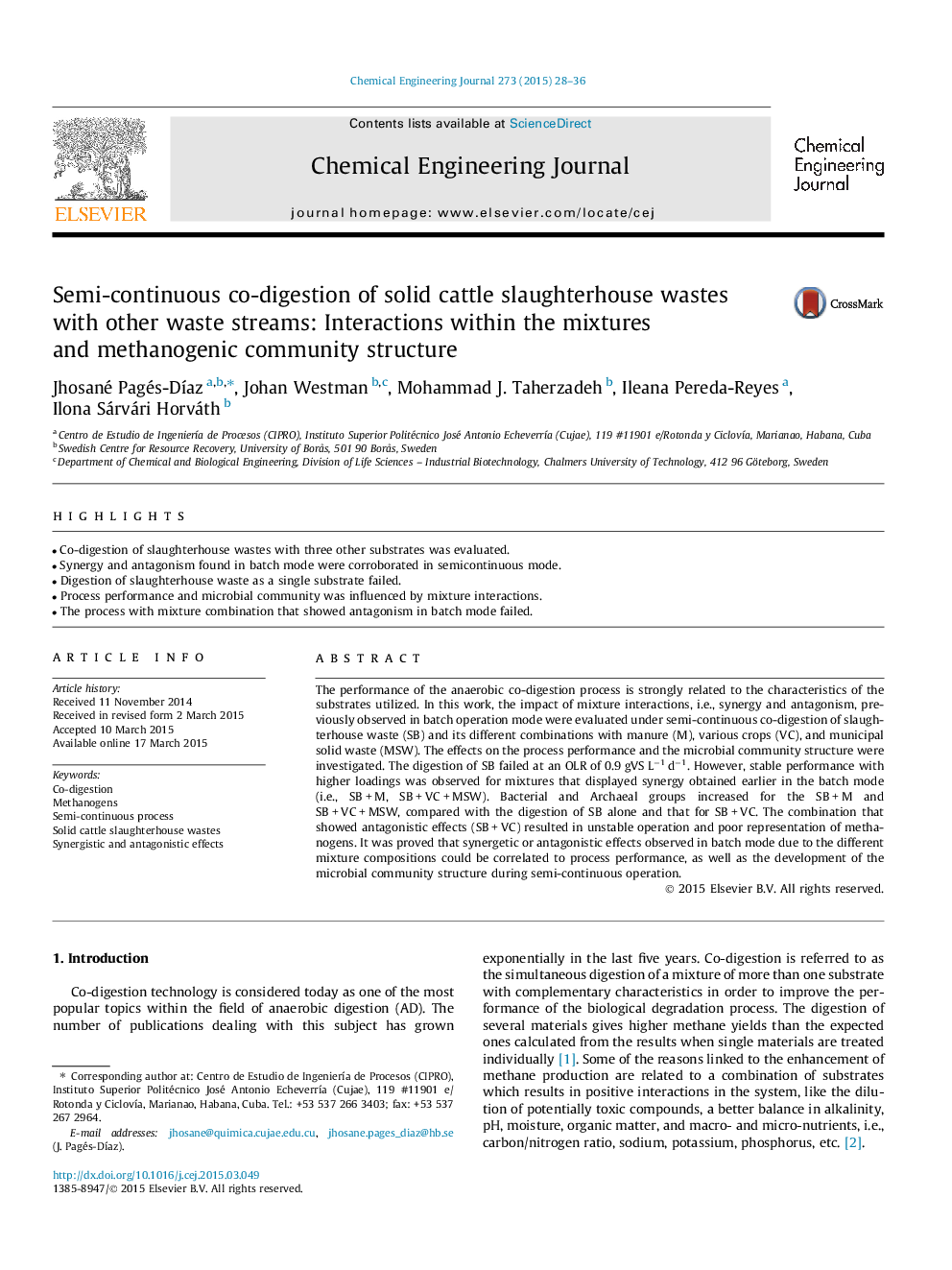| Article ID | Journal | Published Year | Pages | File Type |
|---|---|---|---|---|
| 6584696 | Chemical Engineering Journal | 2015 | 9 Pages |
Abstract
The performance of the anaerobic co-digestion process is strongly related to the characteristics of the substrates utilized. In this work, the impact of mixture interactions, i.e., synergy and antagonism, previously observed in batch operation mode were evaluated under semi-continuous co-digestion of slaughterhouse waste (SB) and its different combinations with manure (M), various crops (VC), and municipal solid waste (MSW). The effects on the process performance and the microbial community structure were investigated. The digestion of SB failed at an OLR of 0.9Â gVSÂ Lâ1Â dâ1. However, stable performance with higher loadings was observed for mixtures that displayed synergy obtained earlier in the batch mode (i.e., SBÂ +Â M, SBÂ +Â VCÂ +Â MSW). Bacterial and Archaeal groups increased for the SBÂ +Â M and SBÂ +Â VCÂ +Â MSW, compared with the digestion of SB alone and that for SBÂ +Â VC. The combination that showed antagonistic effects (SBÂ +Â VC) resulted in unstable operation and poor representation of methanogens. It was proved that synergetic or antagonistic effects observed in batch mode due to the different mixture compositions could be correlated to process performance, as well as the development of the microbial community structure during semi-continuous operation.
Related Topics
Physical Sciences and Engineering
Chemical Engineering
Chemical Engineering (General)
Authors
Jhosané Pagés-DÃaz, Johan Westman, Mohammad J. Taherzadeh, Ileana Pereda-Reyes, Ilona Sárvári Horváth,
